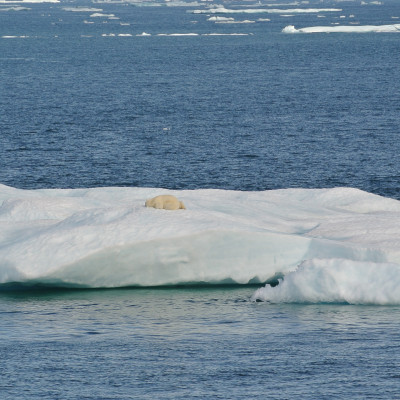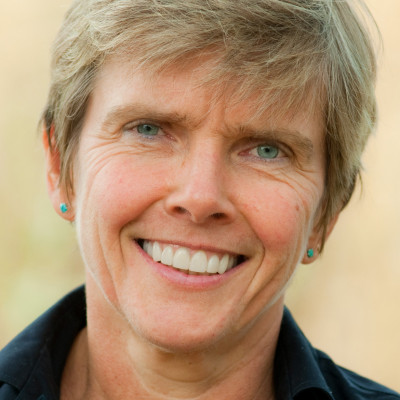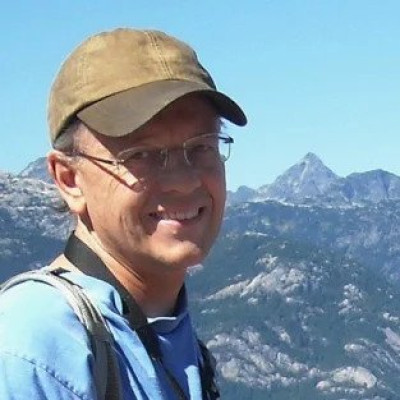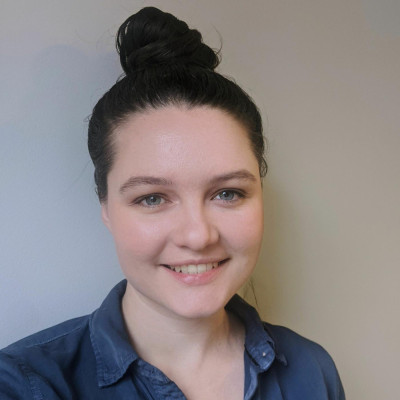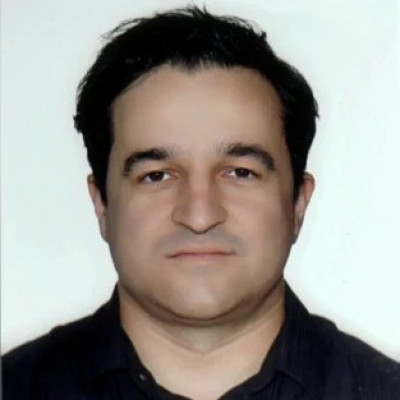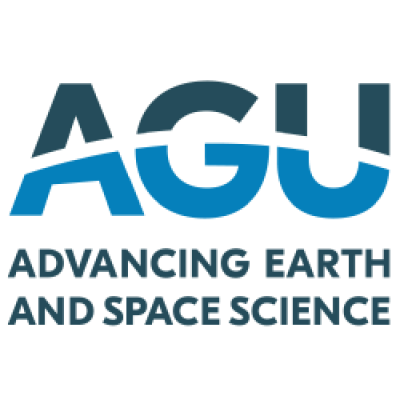News
Stay up-to-date with what's happening in EOAS
Departmental Colloquium: Intersections between Earth Science and a Society-Spanning Response to the Climate Crisis (Jan 13 to Feb 17)
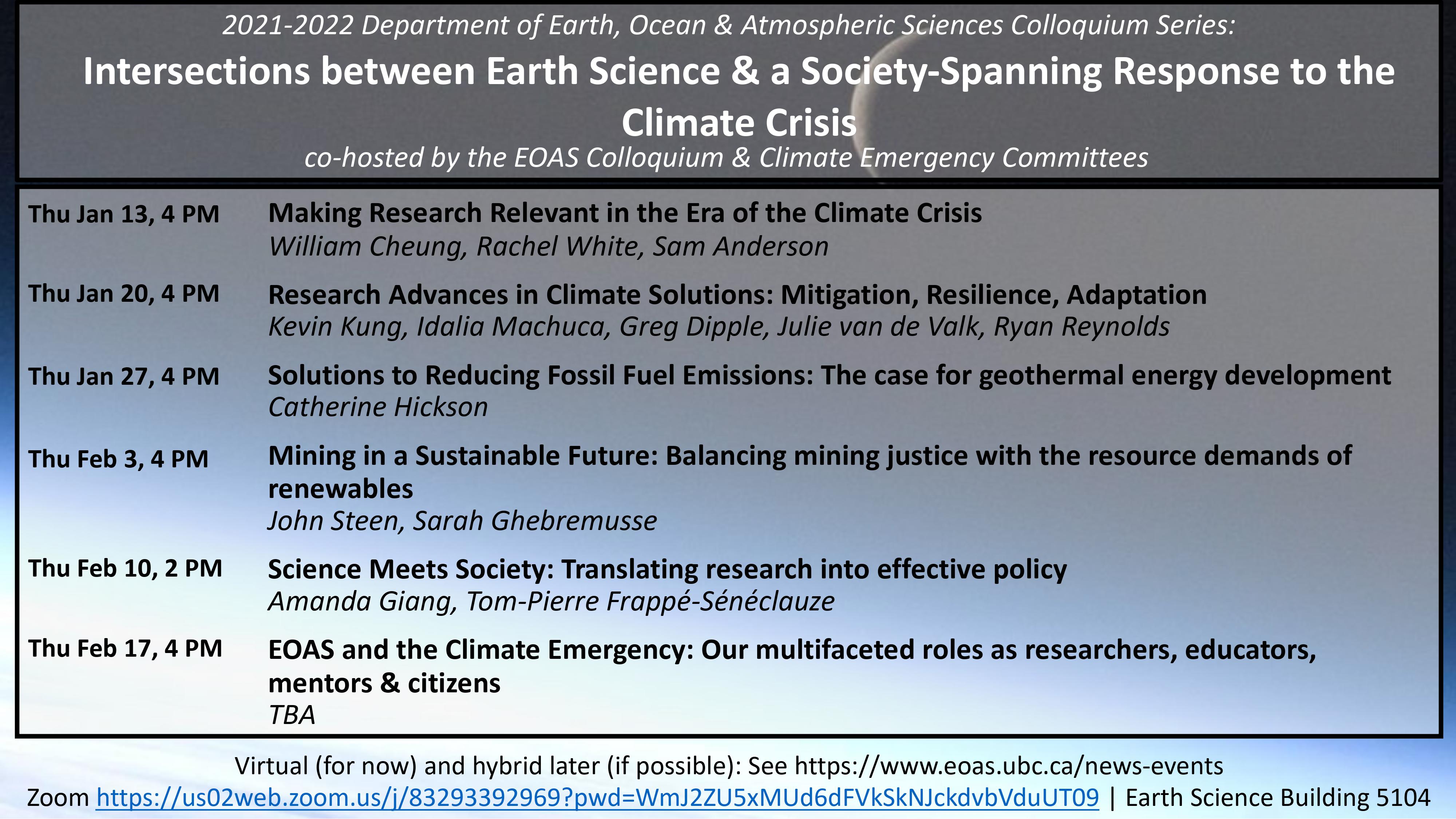
On Thursdays from January 13 to February 17, 2022, the EOAS Climate Emergency Committee is hosting a 6-week colloquium series on Intersections between Earth Science and a Society-Spanning Response to the Climate Crisis.
The goals of this series are to showcase the latest in climate science and climate solutions research, highlight intersections between science and multidisciplinary aspects of the climate crisis, and discuss opportunities and roles for Earth Sciences (and scientists) in the broader context of a society-spanning response to the climate crisis.
The series will consist of talks and panel discussions on topics ranging from the physical climate science at which we excel in EOAS, to intersections between science, social justice, and policy.
Which elements of climate science are perceived as highest priority in the public sphere, and what is the state-of-the-art in those fields?
How do we balance justice and sustainability in mining practices with the incredible primary resource demands of a renewable energy economy?
How is science used, effectively and otherwise, in the development and implementation of climate policy in Canada, and abroad?
To explore these questions and more, come to the Climate Crisis Colloquium Series beginning in the New Year 2022!
Professor Dominique Weis featured on The Blue Hour
“How do geochemists study the chemical composition of earth? How do geochemists better our understanding of the earth's interior, natural resources, climate change, human impacts on the environments, and hazards like earthquakes, tsunamis and volcanoes?”
Dr. Dominique Weis is a professor in the UBC Department of Earth, Ocean, and Atmospheric Sciences at the University of British Columbia and Canada Research Chair in the Geochemistry of the Earth's Mantle. She was interviewed in The Blue Hour radio show of UBC CiTR, a dialogue about life, literature, science, philosophy, and everything in between. Check out the podcast here:
Dr. Weis is a renowned leader in the application of trace elements and radiogenic isotopes analysis. Her research focuses on the distribution of elements and isotopes in Earth systems with an emphasis on the use of abundances and isotopic ratios in defining the source and evolution of igneous rocks, the interaction between different reservoirs (mantle, crust and atmosphere) and the role of tectonic settings. Her analytical insight has enabled new discoveries into Earth systems such as mantle plumes and hotspot volcanoes. Through the analysis of a wide range of materials such as honey, salmon, or belongings, her expertise allows the opening of new lines of research into health, local pollution/food security, and archeology/Indigenous-led studies.
Meet Francis Jones - Geoscience Education Specialist
Francis is a geoscience education specialist in Earth, Ocean and Atmospheric Sciences at UBC. Before that, he spent 10 years teaching geophysics and supporting geophysical inversion research and technology transfer with the UBC Geophysical Inversion Facility. In 1987 he completed an MSc in geophysics and glaciology, then worked for 12 years as a professional geophysicist in instrumentation, mineral and geotechnical exploration, glaciology, and oil/gas well-logging. Currently, he focuses on developing interactive learning strategies for distance and classroom learning with the current emphasis on renewal of quantitative courses and curriculum in the Earth sciences. Recently, he completed 2 years as coordinator of the curriculum development partnership that built a 22-course curriculum for the University of Central Asia’s (UCA) Earth and Environmental Sciences BSc degree program currently being taught at UCA’s campus in Khorog, Tajikistan.
Meet Annie Borch - PhD Student in Volcanology
Annie Borch is a PhD student in volcanology, currently working with Dr. Kelly Russell at the University of British Columbia’s Department of Earth, Ocean and Atmospheric Sciences. She is interested in how volcanic eruptions can affect landscape evolution, and, in turn, how paleoenvironmental conditions such as glaciation impact volcanic eruption styles. Her current research focuses on understanding the volcanic history of extensive Quaternary basalt lava flows in the Whistler, BC area, and how they can be used to reconstruct paleovalley systems prior to and after the Fraser Glaciation. Before joining UBC, Annie completed a Bachelor of Arts and Sciences at Quest University Canada, and a Geographic Information Systems program at BCIT. She also worked in the exploration industry as a field geologist, and as a science writer and illustrator for the Sea to Sky Fire & Ice Aspiring Geopark in Whistler, BC. She has a passion for communicating science and is fascinated by how people understand and interact with the dynamic landscapes that surround them.
Meet Pablo Lacerda Silva - Sedimentologist
Pablo is a geoscientist with B.Sc. (from the University of Vale do Rio dos Sinos) and M.Sc. (from the Federal University of Rio de Janeiro) degrees in Geology, and a Ph.D. degree in Geological Sciences from the University of British Columbia. He has worked in Brazil, the United States and Canada. In his early career he worked on subsurface geological mapping using seismic data, and estimation of rock petrophysical properties from core and borehole log measurements. During his Ph.D., Pablo researched the textural, geochemical and petrophysical properties of mudstones in the Western Canada Sedimentary Basin, as well the reconstruction of thermal maturation history in the basin. He is currently a Postdoctoral Fellow and a sessional lecturer at the University of British Columbia.
Happening at AGU 2021: Check out EOAS presentations!
AGU (American Geophysical Union) Fall Meeting is the most influential event in the world dedicated to the advancement of Earth and space sciences. Every year, AGU Fall Meeting convenes >25,000 attendees from 100+ countries to share research and network. Researchers, scientists, educators, students, policymakers, enthusiasts, journalists and communicators attend AGU Fall Meeting to better understand our planet and environment, and our role in preserving its future. It is a results-oriented gathering rooted in celebrating and advancing positive individual and collective outcomes. This year, #AGU21 will be held at the New Orleans Ernest N. Morial Convention Center and available online from 13-17 December.
The Department of Earth, Ocean and Atmospheric Sciences (EOAS) has been playing an active role at AGU. We'd like to inventory the presentations involving EOAS at AGU this year. Please find the schedule below for time, authors, presentation titles and links.
Monday, 13 December 2021
| Time (PST) | First author / EOAS author | Title (click for presentation link) | Session |
| 06:05 - 06:10 | Kelly Russell, Marie Turnbull, Lucy A Porritt | Englacial Lake Dynamics within a Pleistocene Ice Sheet, Kima’ Kho Tuya, Canada | V11A - A medley of tectonically driven magmatism |
| 06:24 - 06:32 | Reid Merrill, Michael Bostock, Simon Peacock | Complex structure of the Nootka Fault zone revealed by double-difference tomography and a newly determined earthquake catalogue | T11E - The Cascadia Margin: Linking Geophysical Characteristics With Subduction Zone Structure and Evolution I Oral |
| 06:45 - 06:50 | Dominique Weis | Cascade Arc geochemistry: where are we know and how can we move forward? (Invited) | V11A - A medley of tectonically driven magmatism in the Northwestern United States: Oral |
| 11:00 - 11:05 | Michael Bostock, Doriane Drolet, Geena Littel | Multichannel Alignment of S-waves | S13C - Theoretical and Computational Advances in Seismology III Oral |
| 11:15 - 11:20 | Brenda D'Acunha, Mark Johnson | How do carbon and water fluxes change with land use and land cover in the Amazon, Cerrado and Pantanal biomes? An analysis of eddy covariance data across the state of Mato Grosso | B13D - Surface-Atmosphere Interactions: From Single Flux Measurements to Integrated Synthesis I Oral |
| 11:25 - 11:30 | Laura Lukes, KC Kerby-Patel, Jill Nelson, & Bill Liles | EclipseMob 2.0: Updated Plans to Engage Citizen Scientists in a Crowdsourced Experiment During the 2024 Eclipse to Answer Fundamental Questions about the Ionosphere (Invited) | ED13B - Solar Eclipses: Opportunities for Science and Education Outreach I Oral |
| 12:47 - 12:52 | Christina Draeger, Valentina Radic, Rachel White | Evaluation of Dynamical Downscaling for Surface Energy Balance Modelling at Mountain Glaciers in Western Canada | C14A - Observations and Models of Glacier Change II Oral |
| 14:00 - 16:00 | Lindsey Heagy and Doug Oldenburg | Electrical and electromagnetic methods for well integrity | GC15D - Managing Well-Leakage Risk: New Insights for Characterization, Forecasting, and Monitoring of Wells to Demonstrate Integrity I Poster |
| 14:00 - 16:00 | Joseph Capriotti, Thibaut Astic, Lindsey Heagy and Doug Oldenburg | Implementing an open-source framework to joint inversion | NS15C - Open-Source Software for Near-Surface Geophysics and Its Applications II Poster |
Tuesday, 14 December 2021
| Time (PST) | First author / EOAS author | Title (click for presentation link) | Session |
| 07:55 - 08:00 | Mark Jellinek | Exploring the origin of the Martian valley networks | EP22B - Surface Processes on Extraterrestrial Rocky and Icy Bodies I Oral |
| 08:12 - 08:15 | Hongyi Li and Ali Ameli | Identifying Governing Factors of Streamflow Recession Behavior | H22G - Machine Learning Applications in Catchment Hydrology II eLightning |
| 10:50 - 10:58 | Sarah Jaye C Oliva | Crustal growth in continental rifts and flood volcanic provinces | T23A - Growth and Modification of Continental Crust in Extensional and Compressional Regions I Oral |
| 11:06 - 11:14 | Matthijs A Smit | Nappe stacking in the lower continental crust. An example from the Proterozoic Snowbird tectonic zone, Northern Saskatchewan. | T23A - Growth and Modification of Continental Crust in Extensional and Compressional Regions I Oral |
| 11:20 - 11:25 | Rachel H White | Revisiting the Role of Mountains in the Northern Hemisphere Winter Atmospheric Circulation | A23E - General Session: Atmospheric Dynamics and Climate I Oral |
| 12:58 - 13:05 | Simon M Peacock | Partial Hydration of the Forearc Mantle Wedge | T24B - Subduction Top to Bottom: Focus on the Forearc IV Oral |
| 14:18 - 14:21 | Joel E Saylor | Leveraging of large detrital zircon data sets: Modeling sediment sources, contributions, and provenance mapping of the Ancestral Rocky Mountains | EP25A - Understanding Continental‐Scale Landscape Evolution From a Process-Based Perspective II eLightning |
| 14:00 - 16:00 | Davi Monticelli, Naomi Zimmerman | Odor, Air Quality, and Well-Being: Understanding the Urban Smellscape of Vancouver, Canada Using Citizen Science, Monitoring, and Modeling | GH25B - Geospatial Data for Exposure and Risk Modeling: Approaches and Applications II Poster |
| 14:00 - 16:00 | Anthony Di Stefano, Gregory West, Philip H Austin, Brenda Dolan, Henryk Modzelewski, Roland Stull | Evaluation of WRF Microphysics Schemes During OLYMPEX Using Polarimetric Radar Data | A25B: Advances in Radar Remote Sensing of Clouds and Precipitation: Observations, Data Processing, Weather, and Water Model Applications III Poster |
| 14:00 - 16:00 | Sean Crowe | The Mangrove Microbiome—Bacterial underpinning of blue carbon storage on the south coast of China | B25C - Coastal Wetland Carbon and Nitrogen Cycles: Recent Advances in Measurements, Modeling, and Syntheses II Poster |
| 14:00 - 16:00 | Kelly Russell | Flow to fracture – the effective viscosity of dome lavas from Chaos Crags | V25A - Properties of Magmas: Experiments, Theories, Models, and Application to Geochemistry and Volcanology II Poster |
| 14:00 - 16:00 | Wasja Bloch, Michael Bostock | Estimating the amount of hydration of the subducting oceanic mantle using receiver function data | T25C: Subduction Top to Bottom: Focus on the Forearc V Poster |
Wednesday, 15 December 2021
| Time (PST) | First author / EOAS author | Title (click for presentation link) | Session |
| 05:40 - 05:45 | Martin Harris and Kelly Russell | The Magmatic Origins for Cracked Mountain, SW British Columbia: Evidence for Cryptic Tapping of Two Magma Chambers During a Monogenetic Eruption | V31A - The Storage, Transport, and Eruption of Magma Using Field Observations, Laboratory Approaches, and Modeling II Oral |
| 06:05 - 06:10 | Ali Ameli and Joseph Janssen | Getting the right answers for the right reasons: A hydrologic functional approach for improving the performances of machine learning methods | H31H - Machine Learning Applications in Catchment Hydrology I Oral |
| 06:14 - 06:17 | Rachel H White | Stratospheric Ozone and Stratosphere-troposphere Ozone Exchange in the Last Glacial Maximum | A31H - Stratospheric Gas and Aerosol Composition Change and Associated Impacts on Stratospheric Ozone and Climate III eLightning |
| 06:20 - 06:25 | B Barry Narod | Characterization of Tesseract: Performance of a New, High-Stability Magnetometer Design for Applications on Constellation Missions | SH31A - Measurement Techniques for Space Plasma I Oral |
| 11:12 - 11:15 | Sarah Jaye C Oliva | Pre-eruptive Processes of the 2018 Sierra Negra, Galápagos Eruption Inferred from Velocity Variations using Ambient Noise | V33D - Volcano Seismology and Acoustics: Recent Advances in Understanding Volcanic Processes IV eLightning |
| 14:00 - 16:00 | B Barry Narod | The MAGIC of Fluxgate Magnetometer Cores | SH35D - Measurement Techniques for Space Plasma II Poster |
| 14:00 - 16:00 | Sam Anderson and Valentina Radic | Discovery and interpretation of hydrological process representation within convolutional long short-term memory neural networks | H35S - Physics-informed machine learning in hydrology III Poster |
| 14:00 - 16:00 | Laura Lukes | Situating Learning Engineering and Human-Centered Design of Learning Technology in a Geoscience Teaching and Learning Context | SY35C - Geoscience Innovation Through Human-Centered Design and Design Thinking I Poster |
Thursday, 16 December 2021
| Time (PST) | First author / EOAS author | Title (click for presentation link) | Session |
| 06:10 - 06:15 | Sarah Jaye C Oliva | Evaluating the Importance of High Temperatures and Fluids Within the Eastern Rift, Using Ambient Noise Tomography and Seismicity | T41A - Advances in Our Understanding of Magma-Poor and Magma-Rich Rifting Processes I Oral |
| 06:35 - 06:40 | Ali Ameli | Overcoming equifinality in catchment hydrology: The relative value of stable isotope tracer from different points in space and time. | H41B - Advancing Science Through Observations, Monitoring, and Experimentation in Catchment, Critical Zone, and Ecosystem Studies I Oral |
| 08:10 - 08:15 | Joel E Saylor | Megathrust Heterogeneity, Crustal Accretion, and a Topographic Embayment in Western Nepal Himalaya: Insights from the Inversion of Thermochronological Data | T42B - Tectonic, Topographic, and Exhumation History of the Himalaya-Tibetan Orogen II Oral |
| 11:05 - 11:15 | Lindsey Heagy, Thibaut Astic, Joseph Capriotti and Doug Oldenburg | Carbon Sequestration in ultramafic rocks and the role of geophysical inversions | NS43A - Near-Surface Geophysics: A Cross-Cutting Section That Facilitates Diverse Scientific and Societal Studies in Support of Earth Sciences I Oral |
| 12:37 - 12:42 | Catherine L Johnson | The interior of Mars as seen by InSight | DI44A - Diving Deep: Investigations of Planetary Interiors Through Observations, Modeling, and Experiments I Oral |
| 12:42 - 12:51 | Cole Lord-May and Valentina Radic | Improved Assessment of Heat Fluxes from Eddy Covariance Measurements at a Glacier Surface | A44A - Boundary Layer Processes and Turbulence II Oral |
| 12:47 - 12:52 | Catherine Johnson | Full sphere dynamo models for Mars' ancient magnetic field | DI44A - Diving Deep: Investigations of Planetary Interiors Through Observations, Modeling, and Experiments I Oral |
| 14:00 - 16:00 | Joel E Saylor | Upper plate response to flat subduction in the Central Andean Altiplano | DI45D - Unusual Subduction Processes III Poster |
| 14:00 - 16:00 | Anais J Orsi | Absolute Dating of the Bottom of Ice Cores with 40Ar using Smaller Samples | C45D - Ice Core Records of Environmental Change III Poster |
| 14:00 - 16:00 | Doriane Drolet, Michael G Bostock | Study of the Aftershock Distributions, Moment Tensors and Temporal Evolution of the Stress Field of the Iniskin 2016 & the Anchorage 2018, both Mw7.1 Alaskan Intraslab Earthquakes | S45F - Seismology Contributions: Earthquakes V Poster |
Friday, 17 December 2021
| Time (PST) | First author / EOAS author | Title (click for presentation link) | Session |
| 07:55 - 08:00 | Michael G Bostock | Insights into strain-partitioning along a continental-oceanic transform from comprehensive marine seismic imaging of the Queen Charlotte Fault, offshore western Canada and southeast Alaska | T52C - Initiation, Evolution, Structure, and Dynamics of Transform Fault Zones and Their Complex Tectonics II Oral |
| 08:21 - 08:28 | Joel E Saylor | Changes in sediment dispersal and basin geometry driven by flat slab modification of the upper plate during the Laramide orogeny | T52B - Fold-and-Thrust Belts and Associated Basins: Evolution and Dynamics at All Spatiotemporal Scales II Oral |
| 11:11 - 11:17 | Catherine L Johnson | InSight Observations of ULF Waves and Magnetic Impulses on Martian Surface | SM53A - Causes and Consequences of ULF Waves in Planetary Magnetospheres I Oral |
| 11:35 - 11:40 | Colin R Rowell, Mark Jellinek | Coupled conduit-vent-plume models of hydromagmatic eruptions, with implications for stratospheric delivery of sulphur dioxide and volcano-climate feedback | V53A - Submarine Volcanism: Advances in Observations, Methods, and Models I Oral |
| 12:30 - 12:33 | Sam Anderson and Valentina Radic | Deep machine learning for regional streamflow prediction: What are models learning? | U54A: Student engagement to enhance development: Outstanding student presentation award winners from fall meeting 2020 VII eLightning |
| 12:40 - 12:45 | Christina Draeger, Rachel White, Valentina Radic | Towards Mountains Without Glaciers: A Regional Climate Assessment in Western Canada and Alaska | A54E: Regional Climate: Modeling, Analysis, and Impacts II Oral |
| 14:00 - 15:15 | Sarah Jaye C Oliva, Michael G Bostock | Seismicity and structure of the Queen Charlotte plate boundary: insights from earthquake relocations and seismic tomography | T55F - Initiation, Evolution, Structure, and Dynamics of Transform Fault Zones and Their Complex Tectonics III Poster |
| 14:00 - 16:00 | Catherine Johnson | An Update of the Noise Model of the SEIS Seismometer of the InSight Mission To Mars | P55C - In Situ Geophysical Exploration of Planetary Bodies II Poster |
| 14:00 - 16:00 | Michael G Bostock | Searching for dynamic triggering on the central Queen Charlotte Fault following the July 28th 2021 M8.2 Chignik Earthquake using a dense short period OBS array | S55G - The 2021 Chignik, Alaska, Earthquake II Poster |
| 14:00 - 16:00 | Michael G Bostock | Crustal Deformation and Fault Zone Architecture Along the Queen Charlotte Fault, Offshore Southeast Alaska, Using Long-Offset Multichannel Seismic Data from the Transform Obliquity on the Queen Charlotte fault and Earthquake Study (TOQUES) | T55A - Alaska and Northern Canadian Cordillera Geochemistry, Geophysics, Petrology, Seismology, and Tectonics III Poster |
| 14:00 - 16:00 | Michael G Bostock | New Insights on Strain-Partitioning Along the Southern Queen Charlotte Fault, Offshore Haida Gwaii, Canada, from 2021 Multi-Channel Seismic Reflection Imaging | T55A - Alaska and Northern Canadian Cordillera Geochemistry, Geophysics, Petrology, Seismology, and Tectonics III Poster |
| 14:00 - 16:00 | Catherine L Johnson | Understanding Initial Terrestrial Planet Differentiation: The Lunar Geophysical Network Mission | P55C - In Situ Geophysical Exploration of Planetary Bodies II Poster |
| 14:00 - 16:00 | Mengqi Jia, Danyang Su, Ulrich K. Mayer | Assessing GHG Cycling in Riparian Agricultural Soils Using a Uniform Reactive Transport Modeling Approach | H55L - Environmental Vadose Zone Hydrology IV Poster |
| 14:00 - 16:00 | Brenda D'Acunha, Mark Johnson | H55S-0955 - Eddy covariance data reveal that small freshwater reservoirs emit a substantial amount of carbon dioxide and methane. | H55S - Lakes and Inland Water Bodies IV Poster |
| 14:00 - 16:00 | Francis M Jones, Philip H Austin, Christian Schoof and Tara Ivanochko | Reinvigorating Computational and Quantitative undergraduate Curricula for the Earth, Ocean, Atmospheric, Environmental and Planetary Sciences at UBC | ED55C - Building Programming and Computational Skills Through the Geoscience Curriculum II Poster |
| 14:00 - 16:00 | Mark S. Johnson | Interannual Variability of CO2 and CH4 Fluxes in a Temperate Bog over a 6-Year Period | B55C - Carbon Cycling in Global Peatlands IV Poster |
